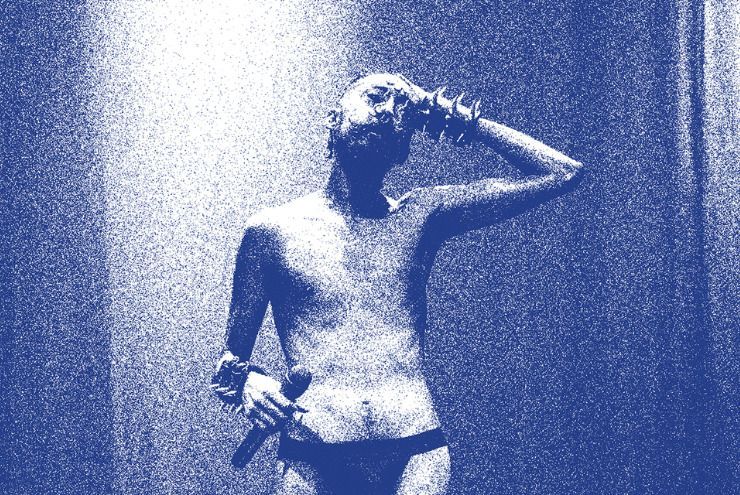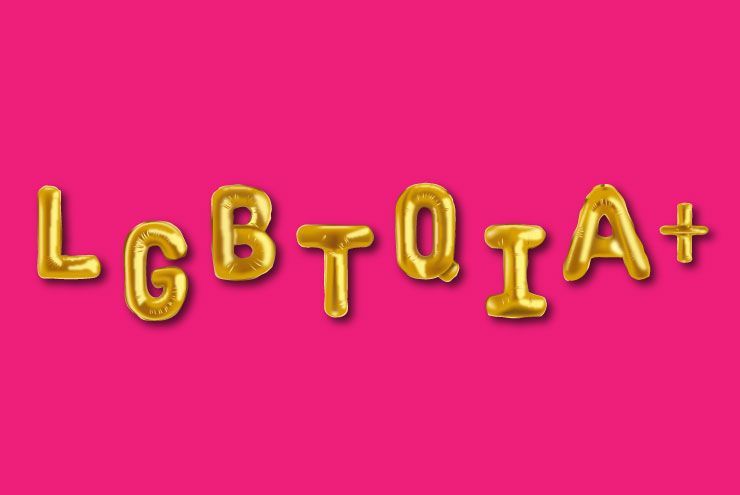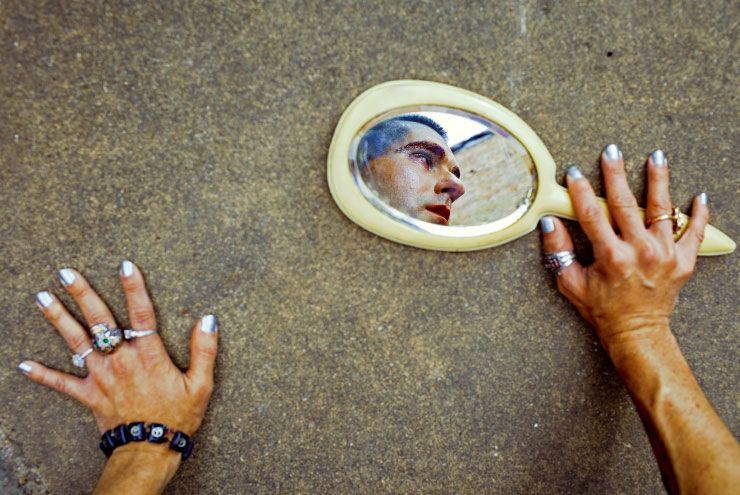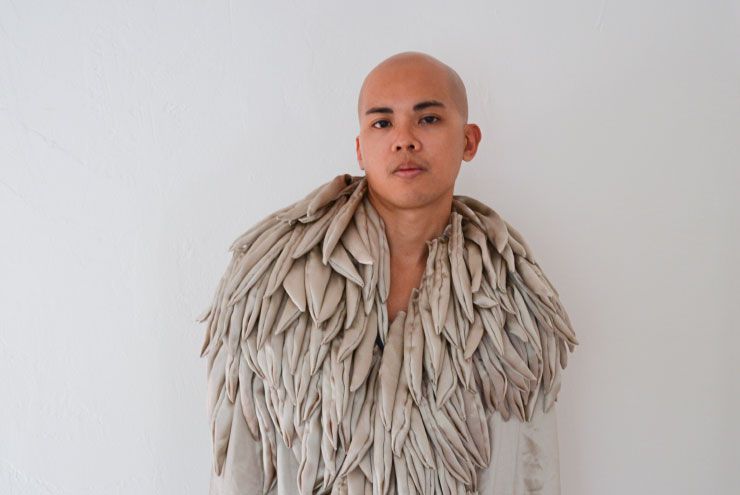By Addie Tsai
The Austin-based queer transmedia festival OUTsider, founded by Curran Nault and co-founded by filmmaker PJ Raval, has long been known for pushing artistic boundaries. Last year, I was delighted to profile three of the festival’s BIPOC artists, focusing on how each found moments of liberation in their art during the era of COVID. Although I’ve since moved to my new home in Richmond, Virginia, I was excited to virtually reconnect with my Texas ties to interview a few of the artists who performed at this year’s “Shapeshifting Underbellies” OUTsider fest.
Lechedevirgen Trimegisto (elle) is a visual and performance artist whose multidimensional artworks focus on sexual dissidence, violence, illness, and death. He takes his artistic name from alchemy and compares art to magic due to its transformative properties. Trimegisto has a background in visual arts. “When I was 16, I saw a Mexican performance artist use her body in an extremely sexual way but also [in] relationship with pain and in other ways I wasn’t used to. That changed everything for me. I fell in love with the idea of performance art as the most experimental and the most free,” describes Trimegisto, whose medium as a young artist was painting. “It was very difficult in the beginning because homophobia and sentiment against LGBTQ people were very high. It was very cathartic for me and gave me tools to manage complicated and complex feelings that I continued to bring into my work. Learning to deal with that symbolic violence and physical violence was very important.”
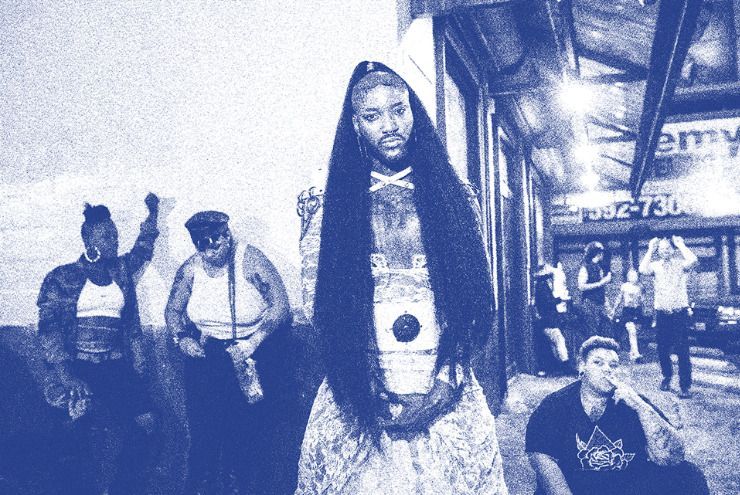
Juicebox P. Burton (they/them) is a Black, non-binary, multidisciplinary artist living in New Orleans. They are a world-builder who frames narratives of trauma in the context of horror and sci-fi in order to heal the collective spirit of the Black community. Juicebox’s work gains its power from its self-taught nature, fostering the collaboration of other creators of color/Black creators whose collective story combats the aristocratic gatekeeping of the mainstream art industry. In 2017 Juicebox became co-owner of Studio Lalala, a Black and trans mixed media production company composed of storytellers, cinematographers, set builders, and special effects artists that actively redistributes resources to marginalized folks through the sourcing of shared equipment, warehouse space, job opportunities, and skill sharing. “When I was coming of age as an artist, I found the only place I fit in was with drag. It’s an integral part of the foundation of what I see,” Juicebox says about their artistic beginnings. Early on, Juicebox learned a great deal about how one uses and works through trauma, especially when performing in front of a BIPOC audience. “I initially wanted to create work that lived in my trauma, as a way to express it and get it out,” they explain. “I never thought about how triggering it was. It changed everything for me. That’s when I began to use fantasy in my work. The story may be traumatic, but where I was not, and now I realize there is a way to tell these stories that are true to our existence, that moves them in a way that does not trigger. I am always trying to figure out the dreamworld, connect to the beauty of something. But you will never see a Black person die in anything I make. Maybe a blue person? I do not need to have that narrative.” Juicebox is currently working on releasing and touring a visual album, part of which was featured at OUTsider this year.
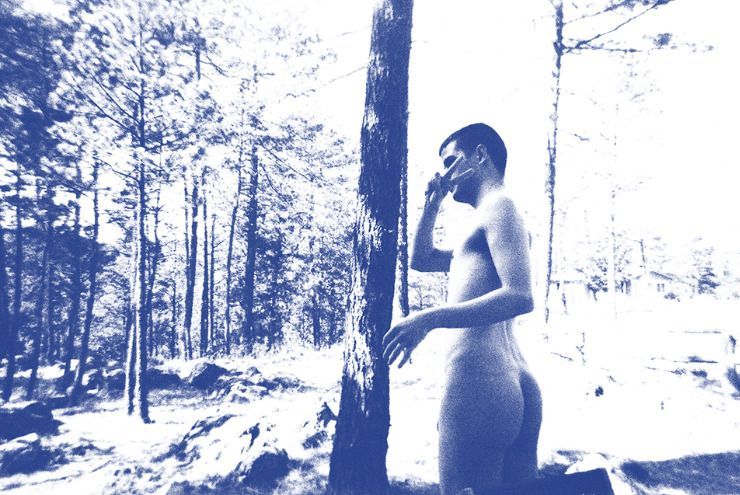
Beto (Alo) (he/him) is a non-verbal autistic artist with more than 10 years of experience in painting and has been part of more than 10 “amateur” exhibitions in Durango City, Mexico. Beto and his brother Pepx Romero came together for the first time in a performance at OUTsider. The performance consisted of the creation of a 30-meter-long banner that was displayed alongside a video that explored the relationship between both artists, considering Beto’s (Alo’s) neurodiverse condition as seen by Pepx. The banner captured the growth and development of their bond through the depiction of the friendly human and non-human faces that characterize Beto’s work. Pepx began his professional theater studies at the Autonomous University of Chihuahua. His artistic career expands outside the limits of the theatrical tradition, dabbling in performance, advertising, and plastic arts. “It was in 2018 that I began to work consciously in Beto’s creative processes, and I began to meet Alo (the artist) from various contemporary art workshops with autistic artists. Being in creative contact with my brother, I was able to appreciate the shy faces he captured on the canvas, and we began the work of developing his pictorial poetics to explore different means of production,” Pepx shares. “The most important thing to us is that the audience could listen to Alo, celebrate the presence of his body, and admire his art. Questioning the audience about their privilege, questioning queer spaces, and doing a review on inclusion, the audience stops thinking for a moment about the diverse body and pays attention to the diverse minds.”
Keep up with OUTsider at outsiderfest.org.


